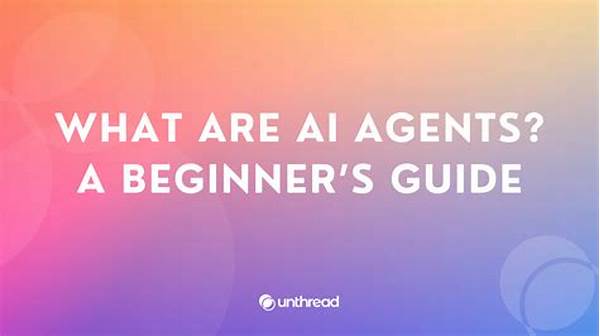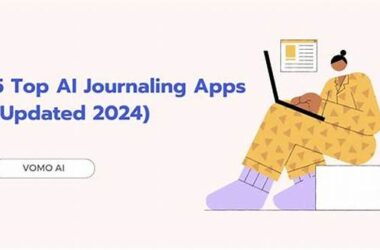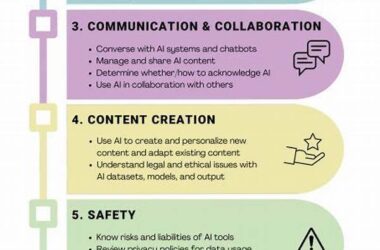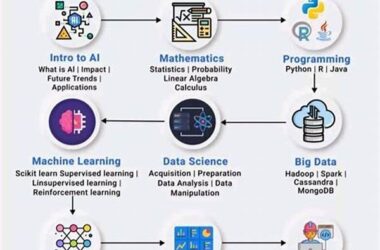In today’s rapidly evolving technological landscape, AI agents have emerged as a groundbreaking innovation, reshaping the way we interact with machines and the digital world. These intelligent entities manage to transcend traditional software applications by possessing the ability to learn, adapt, and perform tasks autonomously. The potential of AI agents is enormous, and for beginners stepping into this fascinating realm, understanding the basics is crucial. This “AI Agents Beginner Guide” aims to empower you with the foundational knowledge needed to embark on this exciting journey. Imagine, a digital assistant that not only responds to your queries but anticipates your needs, optimizes your workflows, and elevates your productivity. That’s the promise and power of AI agents.
Read More : Best Ai Beginner-friendly Tools Ranked
The inception of AI agents dates back to decades when scientists dreamed of creating entities that emulate human cognitive functions. As technology advanced, AI agents evolved—from simple bots to sophisticated, learning-driven programs capable of complex decision-making. This guide will take you through the journey, breaking down complex concepts into understandable chunks. By the end, you’ll not only be able to define what AI agents are but also grasp their applications, benefits, and limitations.
Let’s delve into the mechanics of AI agents, exploring how they leverage algorithms and data to function. Whether you’re an aspiring developer aiming to create your own AI agent or a curious enthusiast eager to understand this modern marvel, this AI Agents Beginner Guide is tailored for you. We’ll also sprinkle in some humor and real-world stories to keep things light-hearted yet informative. So buckle up and prepare to get a sneak peek into the future!
AI agents operate by harnessing the power of machine learning and artificial intelligence algorithms. These advanced programs mimic human decision-making processes and can operate in diverse domains—be it customer service, personal assistance, or data analysis. Through this AI Agents Beginner Guide, you’ll learn about the critical components of AI agents, such as natural language processing, machine learning models, and neural networks which come together to form an efficient, human-like assistant capable of transforming user experiences.
Understanding the Role of AI Agents
Over the last few years, AI agents have cemented their place as indispensable tools across various sectors. From the bureaucratic corridors of corporations to the intimate settings of smart homes, these agents are changing the way tasks are executed. Their capacity to adapt, coupled with the ability to continuously learn from new data, has fueled incredible innovation and efficiency gains. This section of the AI Agents Beginner Guide will delve into how AI agents are utilized across different fields, highlighting their contributions to streamlining processes and augmenting human capabilities.
AI agents can simplify daily tasks by automating routine processes, thereby allowing humans to focus on more strategic endeavors. Whether it’s sorting through large datasets or managing schedules, AI agents are equipped to handle the mundane and the massive alike, with precision and speed. The AI Agents Beginner Guide demonstrates various case studies and testimonials from businesses and individuals benefiting from AI agents to showcase their transformative impact.
Despite the colossal benefits, integrating AI agents also comes with its own set of challenges. Concerns about privacy, ethical usage, bias in algorithms, and dependency are valid issues that need addressing. Because AI agents operate using vast amounts of data, ensuring secure handling of information and implementing ethical AI practices is paramount. The AI Agents Beginner Guide doesn’t shy away from these topics and offers strategies for mitigating risks associated with AI deployment, ensuring a balanced approach to using this potent technology.
Key Components of AI Agents
AI agents are composed of a series of intricate components that work together to simulate intelligent behavior. At the heart of every AI agent lies an array of algorithms that process input data, a feat made possible through a combination of cutting-edge machine learning models and neural networks. These elements allow AI agents to perform a multitude of tasks, from understanding natural language to recognizing patterns in data to even predicting user needs.
In this intricate dance of technological sophistication, natural language processing (NLP) plays a pivotal role. NLP equips AI agents with the ability to recognize, interpret, and respond to human language, which is key to their ability to interface seamlessly with users. Through various deep learning techniques, AI agents decode the nuances of human communication, making interactions with them almost akin to communicating with another human.
Machine learning models, another cornerstone of AI agents, empower these entities with the ability to learn from data. By analyzing historical data and identifying trends, AI agents can make predictions and continuously improve their performance over time. The result is an ever-adaptive agent that becomes more efficient at fulfilling its designated tasks, underscoring the transformative potential showcased in the AI Agents Beginner Guide.
As technology continues to evolve, the capabilities of AI agents expand in tandem. Today, you’re just a click away from deploying an AI agent, thanks to new platforms and tools that make developing these agents more accessible than ever. From small startups to large enterprises, everyone is incorporating AI agents to streamline operations, improve customer engagement, and enhance decision-making processes. The AI Agents Beginner Guide provides insights into recent advancements and future trends shaping this exciting field.
In a world driven by data, the importance of AI agents cannot be overstated. They are poised to revolutionize sectors like healthcare, finance, retail, and more. By continually refining their algorithms and adopting innovations like cognitive computing and augmented intelligence, AI agents seem destined for even greater heights. This guide offers an analysis of current perspectives on AI agents and what the future might hold—combining technical analysis with market insights for a comprehensive outlook.
Moreover, the AI community is continuously working on addressing challenges like ethical concerns and ensuring fair algorithmic decision-making. Through collaborative efforts and stringent research, steps are being taken to ensure AI agents can be trusted partners for users worldwide. Delving into these perspectives in the AI Agents Beginner Guide not only aids in comprehending their significance but also prepares for responsible utilization in diverse applications.
It’s all well and good to discuss the technical capabilities of AI agents, but where they truly shine is in real-world applications. Imagine walking into your office, and instead of spending hours sorting through emails, an AI agent does it for you, prioritizing what matters most. Or picture an AI concierge in a hotel, offering personalized recommendations to guests based on their past preferences. These are not fantasies but current implementations of AI agents changing the way we work and live.
AI agents are making significant strides in customer service environments. Virtual agents can handle customer inquiries 24/7, providing instant responses and freeing up human agents for more complex issues. The use of AI in customer service exemplifies enhanced efficiency and customer satisfaction, aspects the AI Agents Beginner Guide explores with genuine examples. Companies integrating AI foresee reduced costs and improved service levels, reflecting these agents’ ROI.
Healthcare is another field where AI agents are proving invaluable. From diagnostic assistants that analyze medical images with precision to monitoring systems for patients with chronic diseases, AI agents are making healthcare smarter and more efficient. By assisting doctors and medical staff, these agents facilitate more accurate diagnoses and personalized treatment plans—a testament to their potential as covered in the AI Agents Beginner Guide.
Discussions Surrounding AI Agents Beginner Guide
Tag List:
Descriptive Discussion
Navigating the world of AI agents can seem daunting at first, but discussions focused on the AI Agents Beginner Guide can illuminate many aspects of their functionality and impact. From understanding the basic terminologies to exploring specific technical components like machine learning models and natural language processing, there are myriad topics to cover. Engaging with these subjects allows enthusiasts and professionals alike to appreciate the versatility and dynamism of AI agents.
Ethical discussions are particularly vital. The deployment of AI agents raises significant questions about data privacy and the potential for biases in machine learning algorithms. This necessitates frameworks and guidelines to ensure ethical usage, topics that generate considerable interest and debate within tech circles. The AI Agents Beginner Guide taps into such discussions, allowing for a comprehensive understanding while actively participating in ongoing dialogues.
Further, looking at the tangible applications of AI agents in various sectors—ranging from healthcare to customer service to finance—demonstrates their broad utility and the noticeable benefits they offer. These real-world applications provide a fertile ground for discussion as businesses and individuals continuously seek innovative solutions to enhance efficiency, capture value, and spur growth—a conversation encapsulated in the guide’s exploratory narrative.
AI Agents Beginner Guide in Practice
In practice, AI agents have become more user-centric, adapting interfaces and interactions to meet user preferences and needs. Customizability is the key, whether through personalized insights, tailored scheduling, or adaptive learning methodologies. As we dive deeper into the AI Agents Beginner Guide, the aspects of utility and accessibility come to the forefront, proving their indispensable role in modern technology ecosystems.
AI agents are equipped with robust capabilities to automate repetitive tasks, analyze vast amounts of data, and offer predictive insights. They are becoming integral in predictive analysis and decision-making, where they can provide foresight based on historical and current data trends. This predictive capability is not only beneficial but transformative for many organizations seeking a competitive edge in a data-driven world.
Lastly, engaging visually interactive and user-friendly interfaces empower a broader audience to interact with AI agents effectively. As development platforms improve, the potential users expand to include not just tech-savvy individuals but anyone looking to harness AI’s power. This section of the AI Agents Beginner Guide also touches on panoramic developments, which further democratize AI capabilities and accessibility.
Illustrated Tags:
Descriptive Illustrations
Visualizing how AI agents work can demystify their complex operations. In the AI Agents Beginner Guide, illustrations serve as powerful tools in breaking down the high-level architecture of AI agents, presenting their components and interactions vividly. This enables learners to gain insights into how these digital entities parse information, learn from experiences, and make autonomous decisions that mimic human-like reasoning.
Take, for instance, an illustration depicting an AI personal assistant’s day-to-day operations. This can include managing calendars, sending reminders, and interacting via voice-activated commands. By showcasing these functionalities visually, the guide helps users understand the seamless integration of AI agents in everyday activities. Similarly, illustrations explaining AI architecture highlight the symbiotic relationship between components like data input, processing algorithms, and output actions, enhancing comprehension.
In fields like healthcare, visual representations of AI agents at work—such as diagnostic tools or patient monitoring systems—can demonstrate their impactful role. Illustrating AI’s presence in customer service, through virtual assistants offering real-time support, further reinforces their capabilities. These visual elements in the AI Agents Beginner Guide serve as testimonies to AI’s transformative potential, presented in an engaging and accessible way.
The future of AI agents is as thrilling as it is unpredictable. As we stride into a new era of technological advancements, AI agents will continue to evolve, showcasing capabilities that blend seamlessly with human activity and lifestyle. In this advanced segment of the AI Agents Beginner Guide, the discussion revolves around the future trajectory of AI technology and its impending implications.
Through continual refinement of machine learning models, AI agents are expected to become increasingly autonomous and adaptive. The integration of AI in smart homes, for instance, is anticipated to redefine domestic living, facilitating comfort, security, and energy efficiency. With AI agents streamlining daily chores, individuals will have more time for creativity, innovation, and leisure—an exciting prospect that the guide passionately explores.
Moreover, as AI agents proliferate across industries, their collaboration with emerging technologies like IoT, blockchain, and edge computing will be pivotal. This convergence promises a more interconnected world where data flows seamlessly across devices and networks, enabling smarter decision-making and optimized operations. In the AI Agents Beginner Guide, these forecasts are dissected through the lens of current industry trends and technological capabilities.
Lastly, exploring how AI agents will manage ethical dilemmas, privacy concerns, and societal impacts is crucial for a balanced outlook. By preempting these challenges and planning for strategic safeguards, stakeholders can ensure AI agents contribute positively to the collective future. This AI Agents Beginner Guide provides a thoughtful analysis of such considerations, as we prepare for the transformative potential that tomorrow’s AI agents will inevitably bring.



